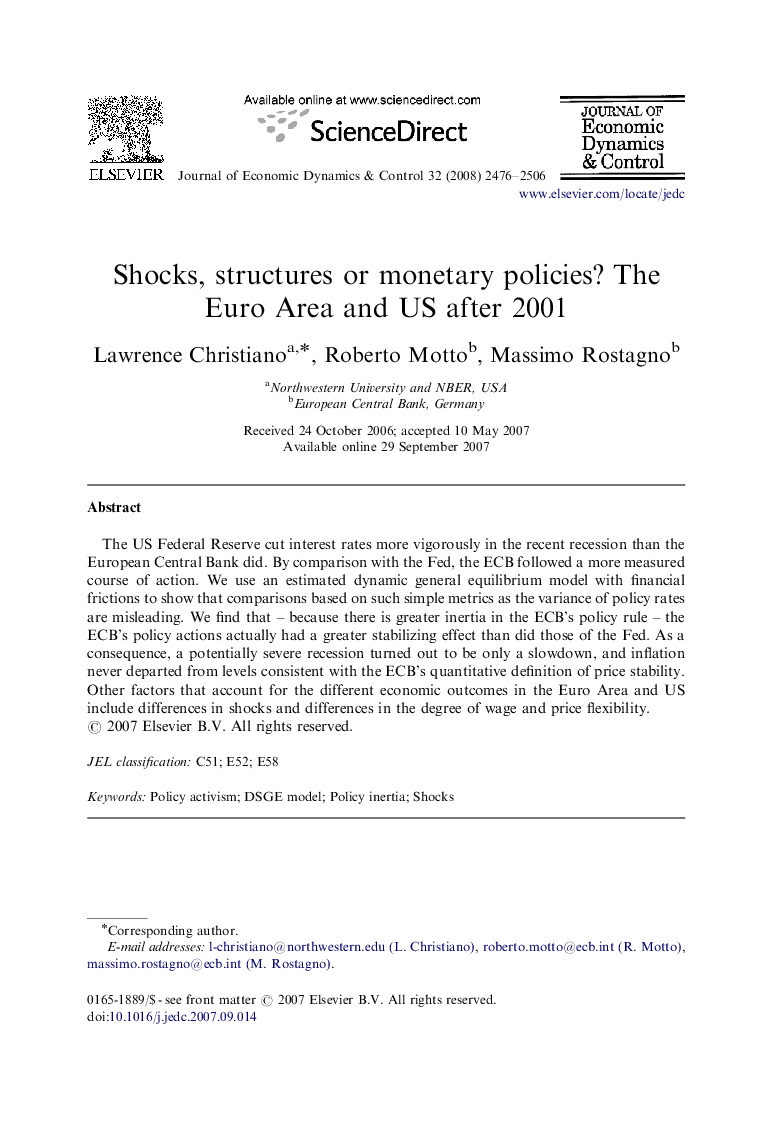| Article ID | Journal | Published Year | Pages | File Type |
|---|---|---|---|---|
| 5099245 | Journal of Economic Dynamics and Control | 2008 | 31 Pages |
Abstract
The US Federal Reserve cut interest rates more vigorously in the recent recession than the European Central Bank did. By comparison with the Fed, the ECB followed a more measured course of action. We use an estimated dynamic general equilibrium model with financial frictions to show that comparisons based on such simple metrics as the variance of policy rates are misleading. We find that - because there is greater inertia in the ECB's policy rule - the ECB's policy actions actually had a greater stabilizing effect than did those of the Fed. As a consequence, a potentially severe recession turned out to be only a slowdown, and inflation never departed from levels consistent with the ECB's quantitative definition of price stability. Other factors that account for the different economic outcomes in the Euro Area and US include differences in shocks and differences in the degree of wage and price flexibility.
Keywords
Related Topics
Physical Sciences and Engineering
Mathematics
Control and Optimization
Authors
Lawrence Christiano, Roberto Motto, Massimo Rostagno,
